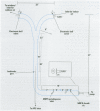Abstract
An intensive particle monitoring study was conducted in homes in the Boston, Massachusetts, area during the winter and summer of 1996 in an effort to characterize sources of indoor particles. As part of this study, continuous particle size and mass concentration data were collected in four single-family homes, with each home monitored for one or two 6-day periods. Additionally, housing activity and air exchange rate data were collected. Cooking, cleaning, and the movement of people were identified as the most important indoor particle sources in these homes. These sources contributed significantly both to indoor concentrations (indoor-outdoor ratios varied between 2 and 33) and to altered indoor particle size distributions. Cooking, including broiling/baking, toasting, and barbecuing contributed primarily to particulate matter with physical diameters between 0.02 and 0.5 microm [PM((0.02-0.5))], with volume median diameters of between 0.13 and 0.25 microm. Sources of particulate matter with aerodynamic diameters between 0.7 and 10 microm [PM((0.7-10))] included sautéing, cleaning (vacuuming, dusting, and sweeping), and movement of people, with volume median diameters of between 3 and 4.3 microm. Frying was associated with particles from both PM((0.02-0.5)) and PM((0.7-10)). Air exchange rates ranged between 0.12 and 24.3 exchanges/hr and had significant impact on indoor particle levels and size distributions. Low air exchange rates (< 1 exchange/hr) resulted in longer air residence times and more time for particle concentrations from indoor sources to increase. When air exchange rates were higher (> 1 exchange/hr), the impact of indoor sources was less pronounced, as indoor particle concentrations tracked outdoor levels more closely.
Full text
PDF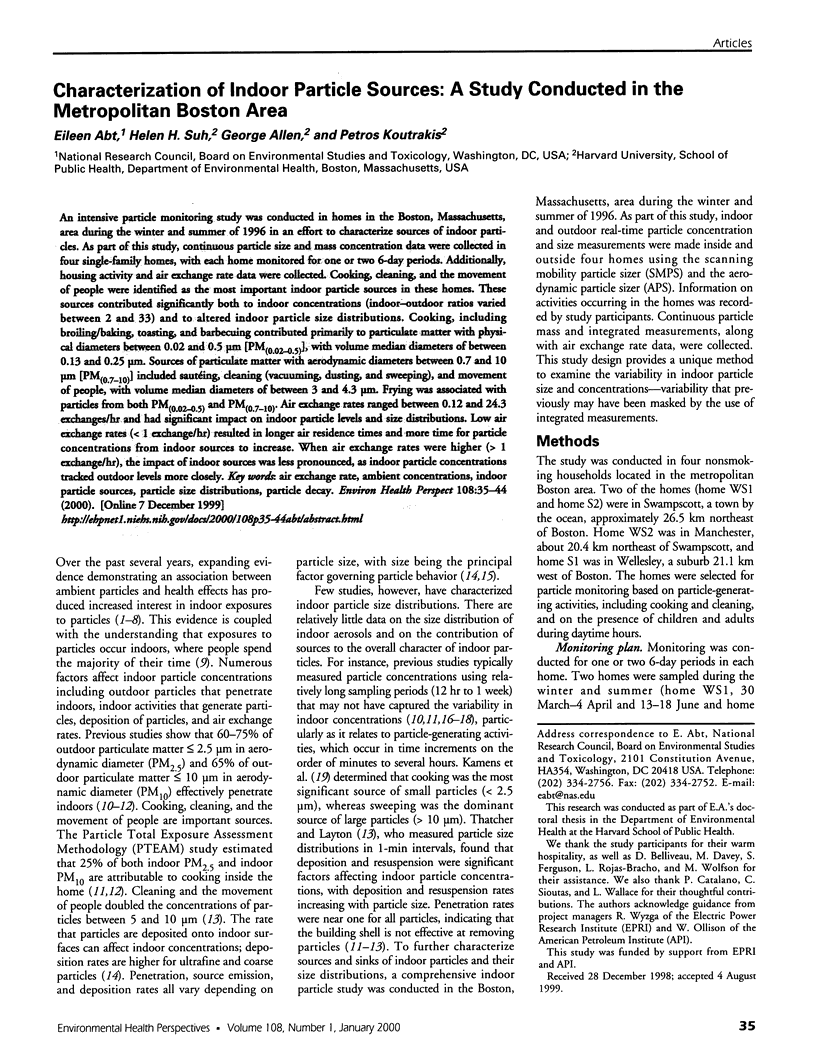
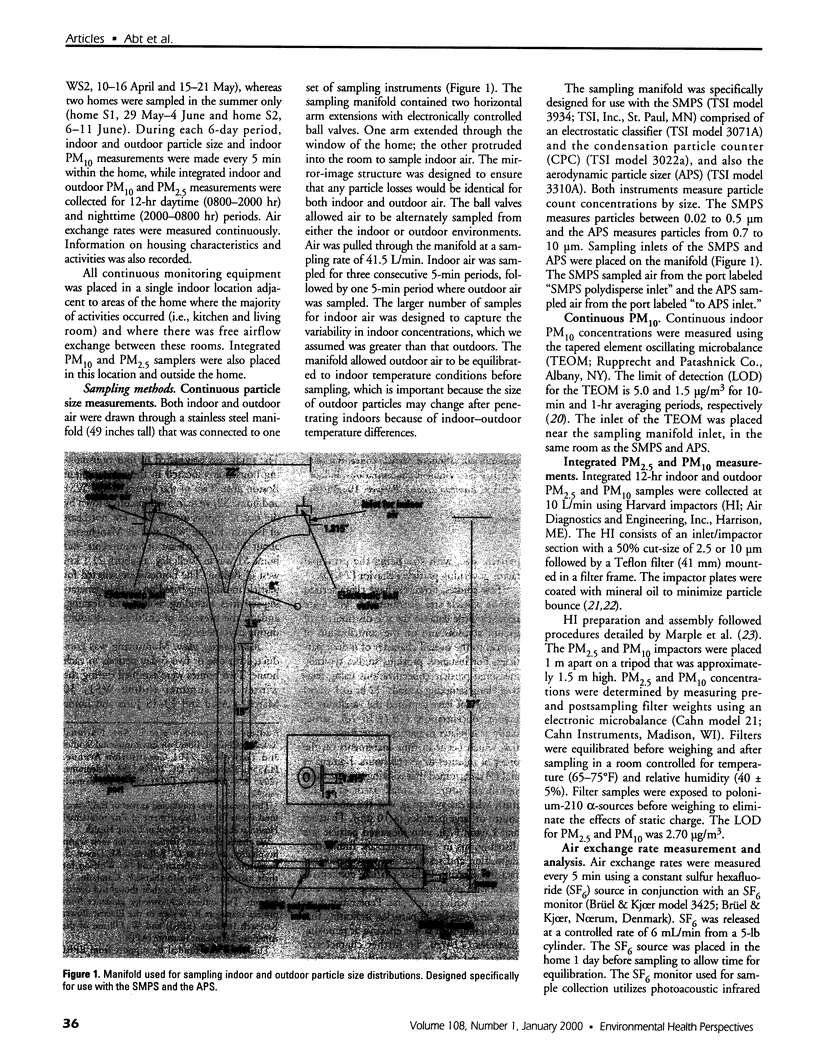

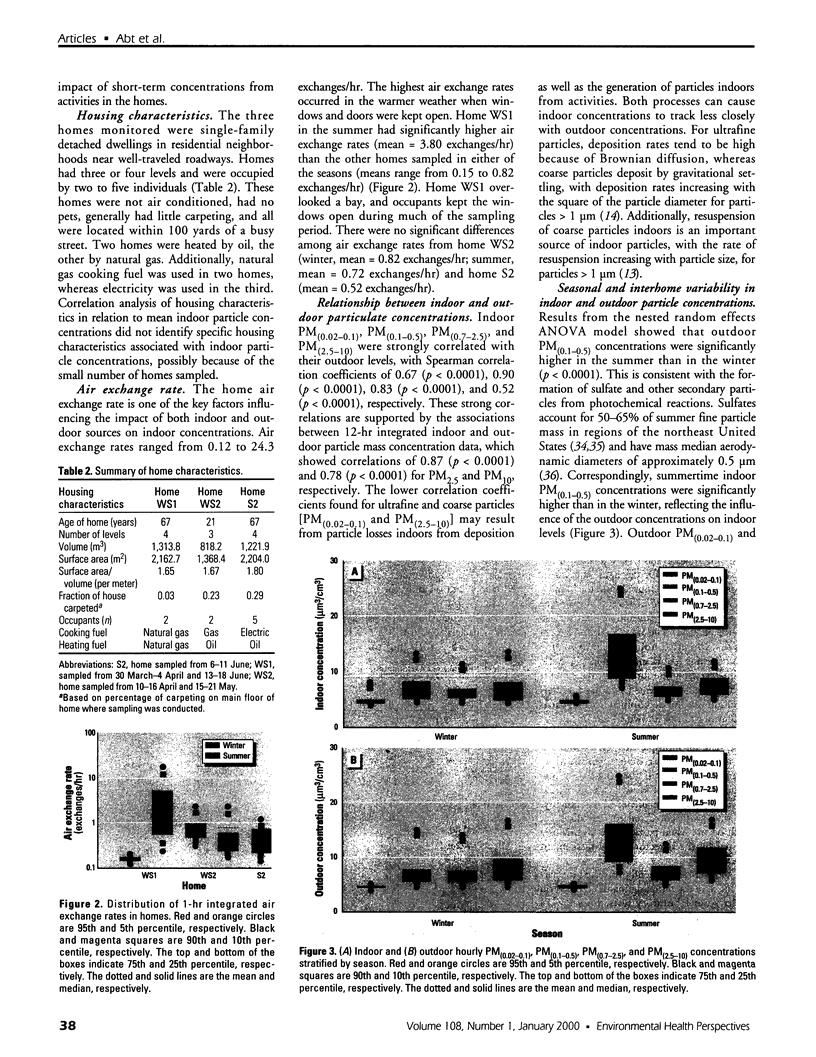
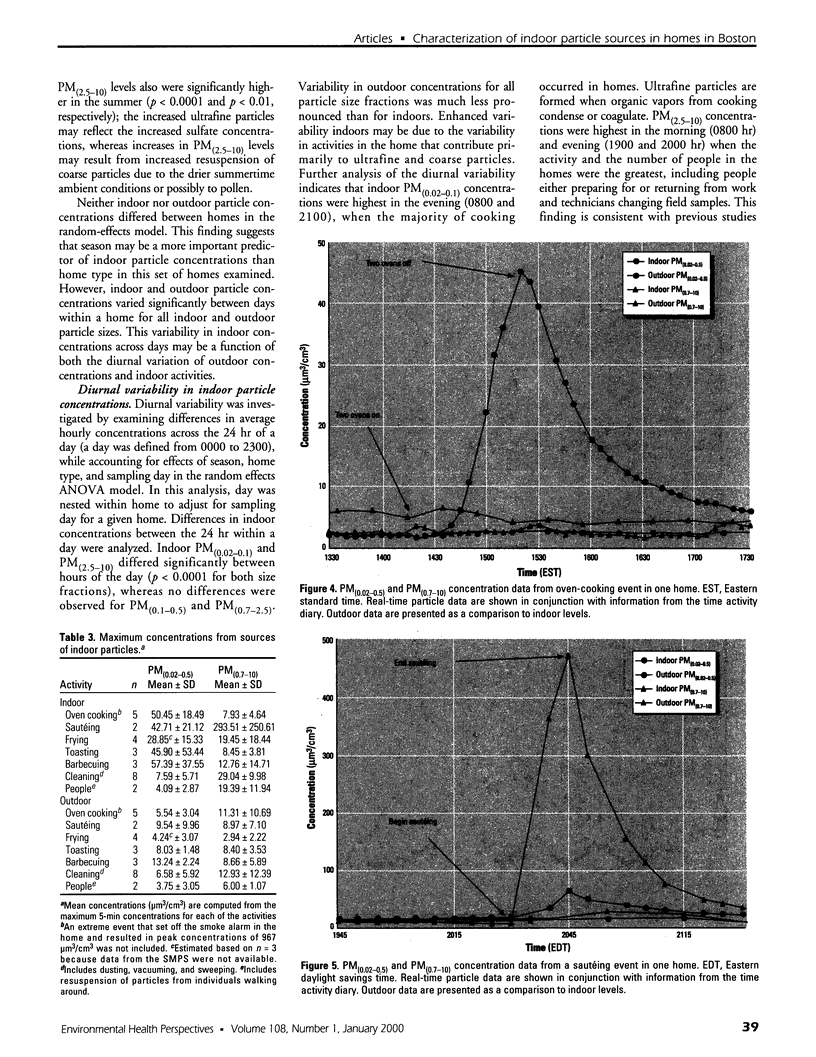
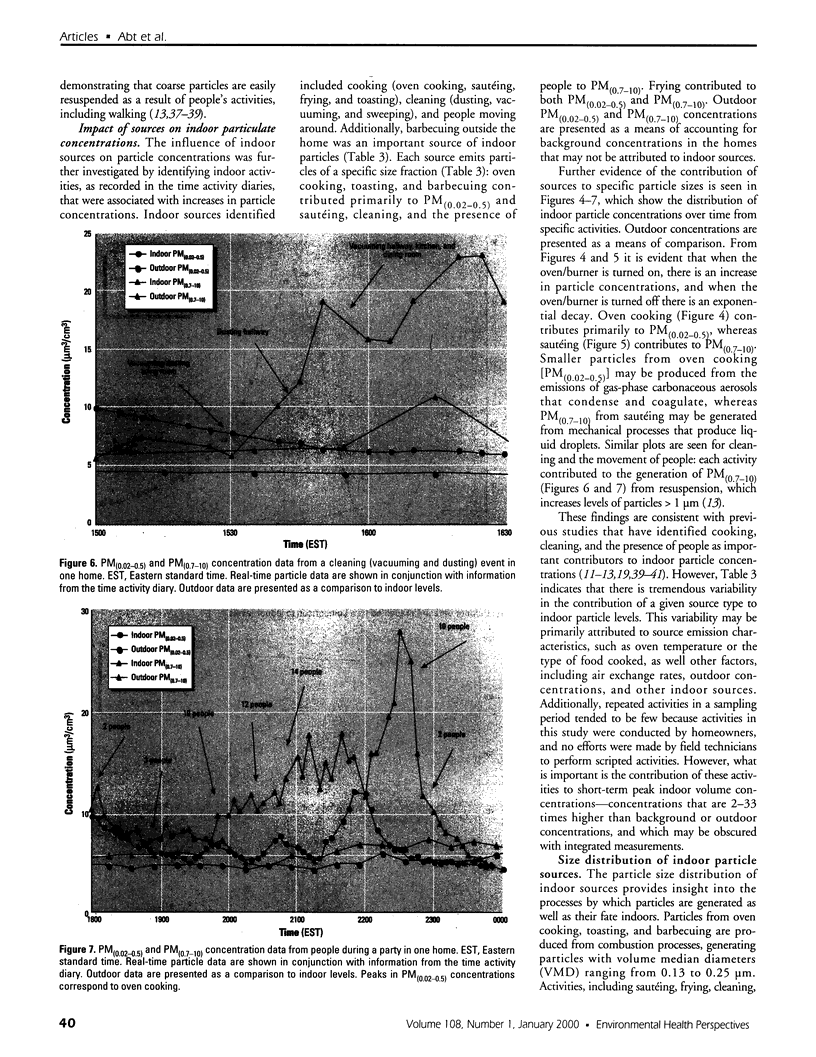
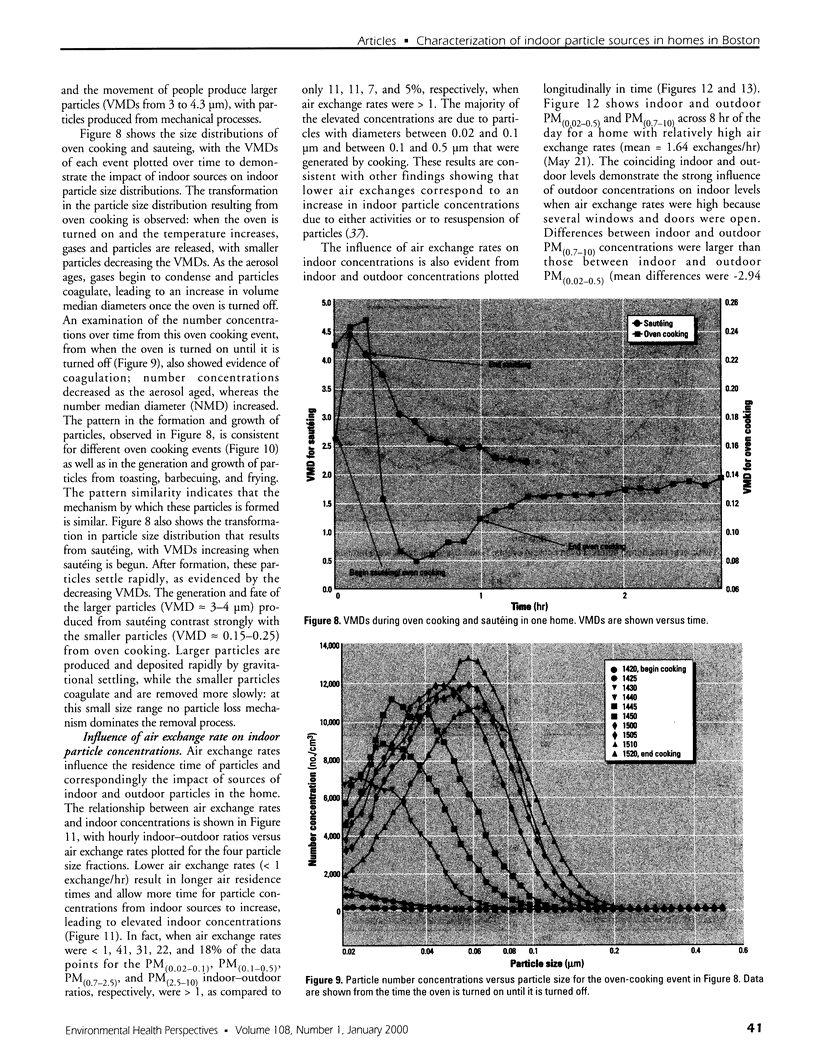
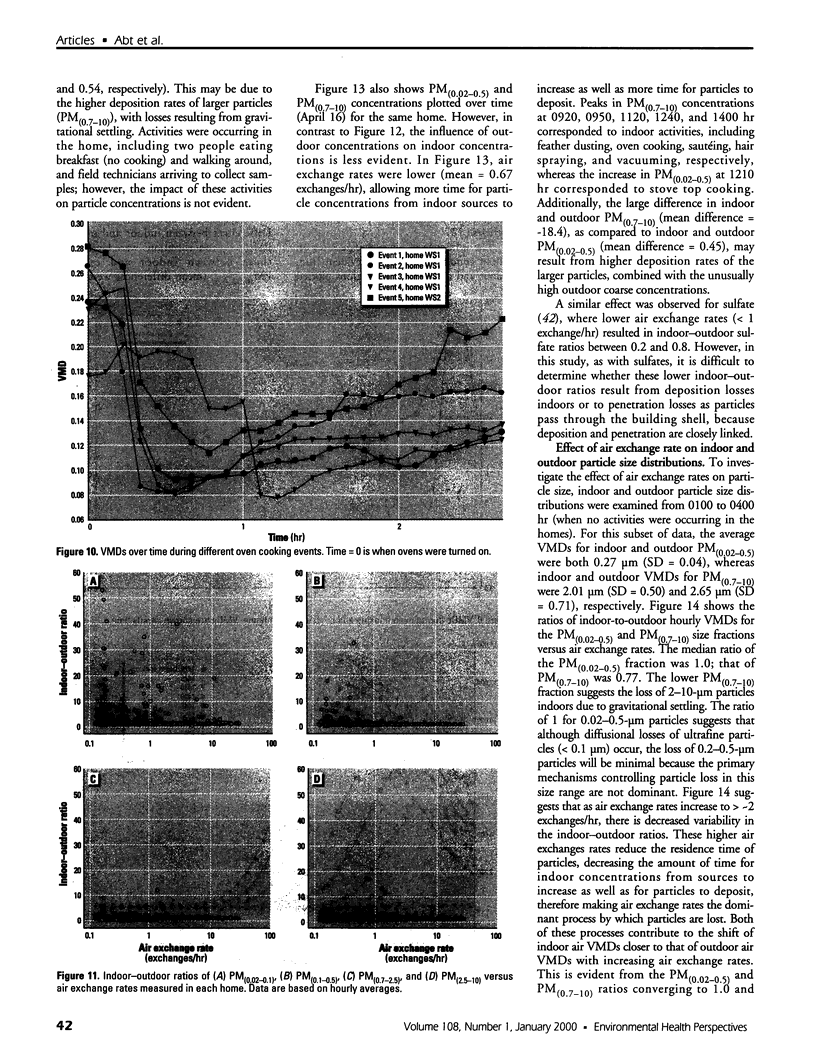
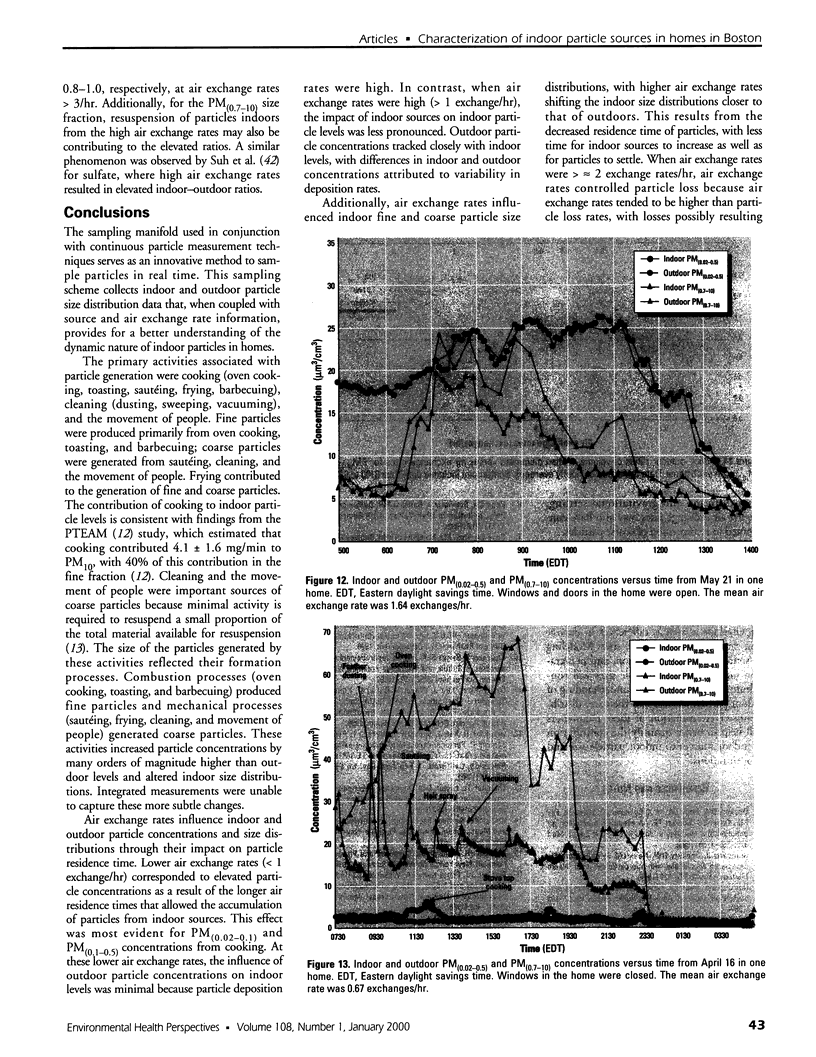
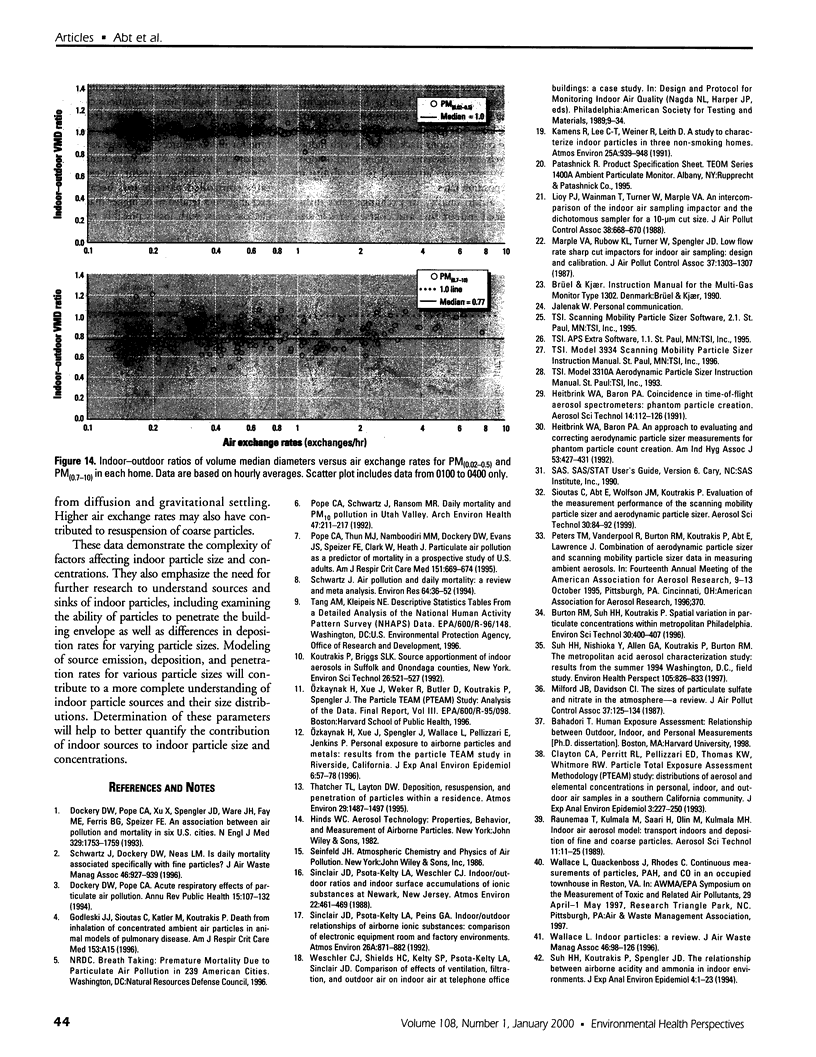
Images in this article
Selected References
These references are in PubMed. This may not be the complete list of references from this article.
- Clayton C. A., Perritt R. L., Pellizzari E. D., Thomas K. W., Whitmore R. W., Wallace L. A., Ozkaynak H., Spengler J. D. Particle Total Exposure Assessment Methodology (PTEAM) study: distributions of aerosol and elemental concentrations in personal, indoor, and outdoor air samples in a southern California community. J Expo Anal Environ Epidemiol. 1993 Apr-Jun;3(2):227–250. [PubMed] [Google Scholar]
- Dockery D. W., Pope C. A., 3rd Acute respiratory effects of particulate air pollution. Annu Rev Public Health. 1994;15:107–132. doi: 10.1146/annurev.pu.15.050194.000543. [DOI] [PubMed] [Google Scholar]
- Dockery D. W., Pope C. A., 3rd, Xu X., Spengler J. D., Ware J. H., Fay M. E., Ferris B. G., Jr, Speizer F. E. An association between air pollution and mortality in six U.S. cities. N Engl J Med. 1993 Dec 9;329(24):1753–1759. doi: 10.1056/NEJM199312093292401. [DOI] [PubMed] [Google Scholar]
- Heitbrink W. A., Baron P. A. An approach to evaluating and correcting aerodynamic particle sizer measurements for phantom particle count creation. Am Ind Hyg Assoc J. 1992 Jul;53(7):427–431. doi: 10.1080/15298669291359898. [DOI] [PubMed] [Google Scholar]
- Marple V. A., Rubow K. L., Turner W., Spengler J. D. Low flow rate sharp cut impactors for indoor air sampling: design and calibration. JAPCA. 1987 Nov;37(11):1303–1307. doi: 10.1080/08940630.1987.10466325. [DOI] [PubMed] [Google Scholar]
- Milford J. B., Davidson C. I. The sizes of particulate sulfate and nitrate in the atmosphere--a review. JAPCA. 1987 Feb;37(2):125–134. doi: 10.1080/08940630.1987.10466206. [DOI] [PubMed] [Google Scholar]
- Ozkaynak H., Xue J., Spengler J., Wallace L., Pellizzari E., Jenkins P. Personal exposure to airborne particles and metals: results from the Particle TEAM study in Riverside, California. J Expo Anal Environ Epidemiol. 1996 Jan-Mar;6(1):57–78. [PubMed] [Google Scholar]
- Pope C. A., 3rd, Schwartz J., Ransom M. R. Daily mortality and PM10 pollution in Utah Valley. Arch Environ Health. 1992 May-Jun;47(3):211–217. doi: 10.1080/00039896.1992.9938351. [DOI] [PubMed] [Google Scholar]
- Pope C. A., 3rd, Thun M. J., Namboodiri M. M., Dockery D. W., Evans J. S., Speizer F. E., Heath C. W., Jr Particulate air pollution as a predictor of mortality in a prospective study of U.S. adults. Am J Respir Crit Care Med. 1995 Mar;151(3 Pt 1):669–674. doi: 10.1164/ajrccm/151.3_Pt_1.669. [DOI] [PubMed] [Google Scholar]
- Schwartz J. Air pollution and daily mortality: a review and meta analysis. Environ Res. 1994 Jan;64(1):36–52. doi: 10.1006/enrs.1994.1005. [DOI] [PubMed] [Google Scholar]
- Schwartz J., Dockery D. W., Neas L. M. Is daily mortality associated specifically with fine particles? J Air Waste Manag Assoc. 1996 Oct;46(10):927–939. [PubMed] [Google Scholar]
- Suh H. H., Koutrakis P., Spengler J. D. The relationship between airborne acidity and ammonia in indoor environments. J Expo Anal Environ Epidemiol. 1994 Jan-Mar;4(1):1–22. [PubMed] [Google Scholar]
- Suh H. H., Nishioka Y., Allen G. A., Koutrakis P., Burton R. M. The metropolitan acid aerosol characterization study: results from the summer 1994 Washington, D.C. field study. Environ Health Perspect. 1997 Aug;105(8):826–834. doi: 10.1289/ehp.97105826. [DOI] [PMC free article] [PubMed] [Google Scholar]
- Wallace L. Indoor particles: a review. J Air Waste Manag Assoc. 1996 Feb;46(2):98–126. doi: 10.1080/10473289.1996.10467451. [DOI] [PubMed] [Google Scholar]



